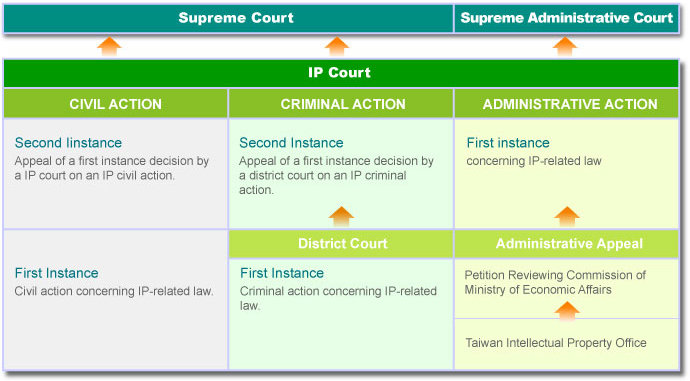| Others |
| |
|
I. The Intellectual Property Court started operation on July 1, 2008
|
| |
|
The Intellectual Property Court has started operation on July 1, 2008. During the transitional period, all the cases filed before June 30, 2008 are still handled by the original Courts. For the new cases, as mentioned by the TIPO, the IP issues are under the jurisdiction of the Courts as follows:
|
| |
| 1. |
The 1st instance of the Administrative Lawsuit for Patent or Trademark issues: Intellectual Property Court (formerly handled by the High Administrative Court)
|
| 2. |
The 2nd instance of the Administrative Lawsuit for Patent or Trademark issues: Supreme Administrative Court (the same as before)
|
| 3. |
The 1st and 2nd instances of the Civil actions for Patent, Trademark or Copyright issues: Intellectual Property Court (formerly handled by the District Court)
|
| 4. |
The 3rd instance of the Civil actions for Patent, Trademark or Copyright issues: Supreme Administrative Court (the same as before)
|
| 5. |
To file a lawsuit in the Criminal action for Trademark or Copyright issues: to lodge a complaint to a public prosecutor in the District Court where the infringer is domiciled, resides, or located. (same as before)
|
| 6. |
The 1st instance of the Criminal actions for Trademark or Copyright issues: District Court (same as before)
|
| 7. |
The 2nd instance of the Criminal actions for Trademark or Copyright issues: Intellectual Property Court (formerly handled by the High Court)
|
| 8. |
To apply for securing evidence, a provisional seizure order, provisional measures for IP issues: Intellectual Property Court (formerly handled by the District Court).
|
| |
| |
|
●Please refer to the IP Case Procedure of the Intellectual Property Court:
|
| |
 |
| |
|
(Source: Intellectual Property Court)
|